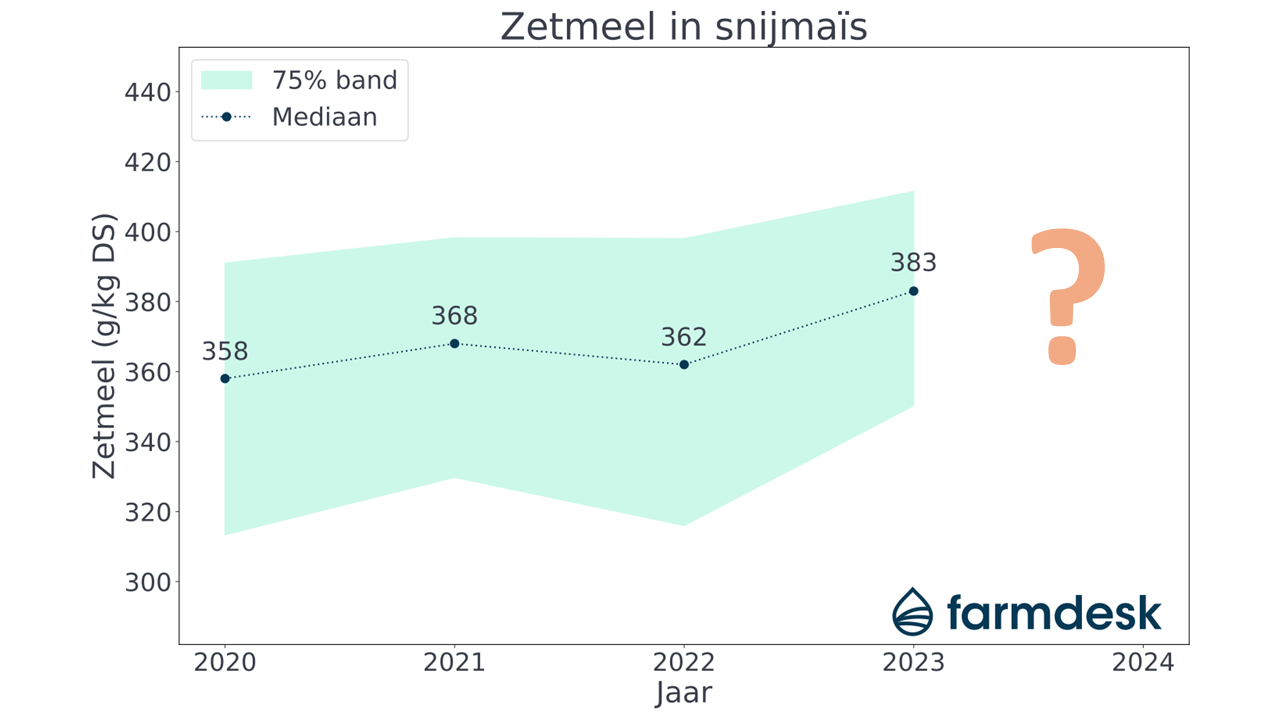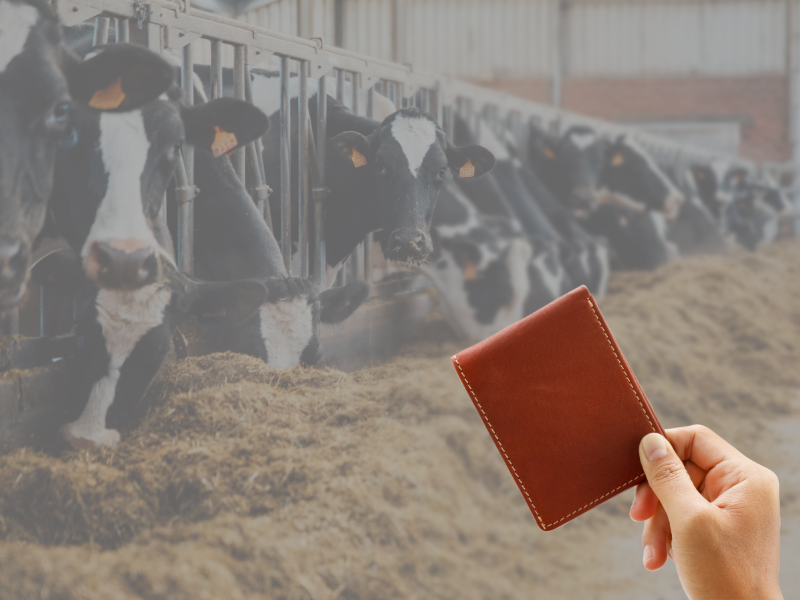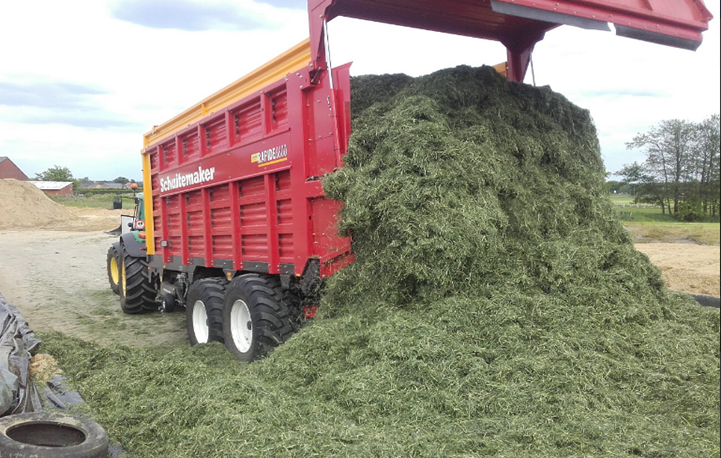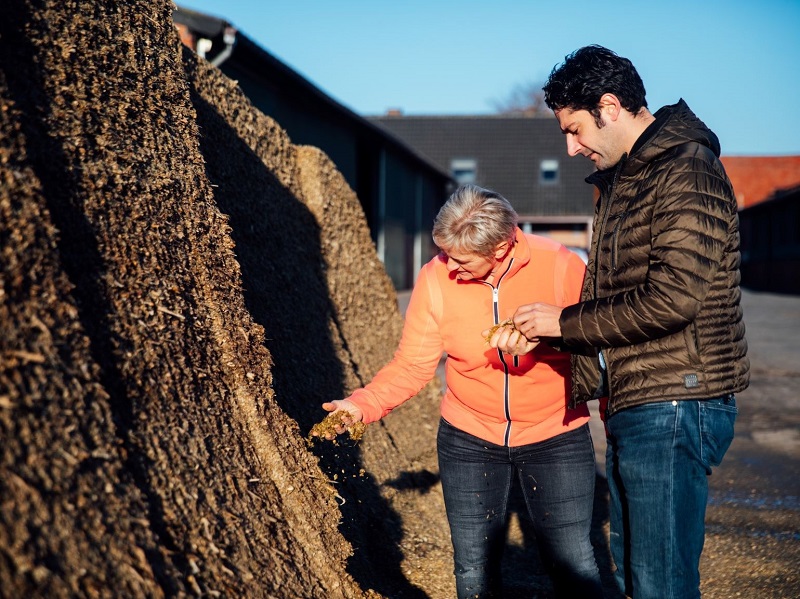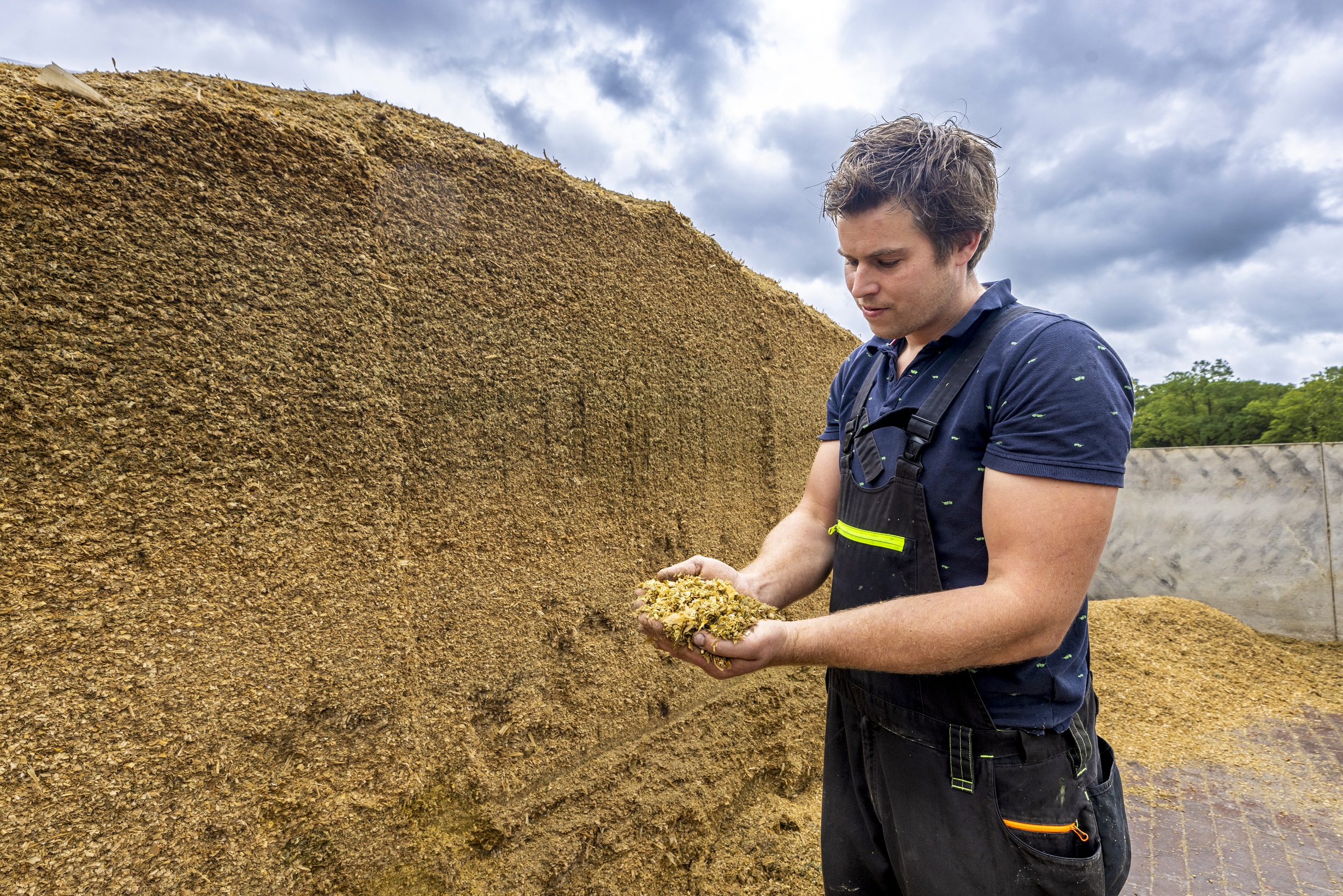With normal ruminal activity, significant mechanical grinding of feed occurs to increase digestibility. As a side effect, bicarbonate enters the cattle's mouth via saliva from the blood. This bicarbonate is a base and therefore buffers the rumen, where rumen flora produces acids all the time.
Bicarbonate production normally occurs abundantly in cattle's blood based on CO2 and water. In hot and humid weather, a cattle will attempt to cool itself by hyperventilation or rapid breathing.
This increases the emission of CO2, leaving insufficient building blocks to make bicarbonate itself. In addition, the outflow of bicarbonate through the urine increases. Meanwhile, rumen flora continues to produce the same amount of acids, which are less buffered by the reduced presence of bicarbonate in saliva. This increases the risk of (latent) rumen acidosis and possibly decreases feed intake.
Adverse effects
The fat content first comes under pressure with rumen acidification. At a further stage, milk production drops and also the protein content in the milk, further possibly increasing the risk of diarrhea. In addition, the immune system can be undermined, which increases the risk of infections, and claw and fertility problems can arise at a later stage.
Read also the hot year 2020 article with the impact of heat on production results.
Measures
Avoid heating the barn by insulating the roof. Cooling of the barn can be achieved by an open wind curtain, active ventilation and/or atomization of water on the roof so that the evaporation of this moisture extracts heat from the barn environment resulting in cooling.
If possible, cows can also be kept outside in the shade of trees during hot days.
Provide animals with plenty of fresh and clean drinking water.
There are several rumen buffers available to add to the ration. Adding artificial buffers to the ration can reduce the risk of rumen acidification. There are several products on the market in this regard.
Sodium bicarbonate
Sodium bicarbonate is a rumen buffer, which in addition to its buffering capacity can also provide the necessary sodium to the cow. 100-150 grams of sodium bicarbonate already provides solid buffering capacity without risk of excess sodium.
Sodium bicabonate dissolves very quickly in the rumen fluid and acts as buffers quickly, but thus has only a limited effect further in time.
Feed chalk/calcium bicarbonate
Feed chalk or calcium bicarbonate is another potential buffer, which, in addition to its buffering capacity, can also provide needed calcium to the cow.
Chalk dissolves relatively slowly in the rumen, which spreads out the buffering capacity in the rumen for a relatively long time over time. Sometimes the chalk is replaced with calcium carbonate of marine origin, where the absorption surface is increased by the various pores in the material and it can work just a bit more efficiently.
50-100 grams of chalk or calcium carbonate of marine origin already gives decent buffering capacity without a great risk of excess calcium. Lucerne-rich rations sometimes do require extra attention in this regard because Lucerne is already very rich in calcium.
Live yeasts
Live yeast is also sometimes used in rations with a high risk of acidification due, for example, to many rapidly digestible carbohydrates. A live yeast is able to increase pH by competing with lactic acid-forming bacteria.
In addition, the metabolic products - amino acids and vitamins - formed by the yeast fuel the lactic acid-converting bacterium Megasphaera elsdenii.
A third effect of live yeast on pH is oxygen scavenging. This maintains the oxygen-deficient environment so that cell wall-degrading microbes can do their job better to produce acetic acid and thus better compete with the lactic acid-forming bacteria, which are most acidifying in the rumen.
Chinopolite (zeolite)
A totally different artificial buffer constitutes quinopolite, a zeolite that acts like a sponge to absorb acid in an acidic environment, but can also release it when it becomes more alkaline. This allows it to be used multiple times and does not completely disappear like the bicarbonates or carbonates after reaction with an acid.
50-100 grams of quinopolite already gives decent buffering capacity without major risks. Know that this also acts as a mycotoxin binder, but so can interfere with absorption of other minerals, especially at higher doses.
Points of interest
To keep feed intake high in high temperatures, it is good to offer fresh feed and also keep it fresh on the feed alley.
With this objective, acids are sometimes added to the feed mix, which can prevent scalding.
"Know, however, that these acids will react with any bases you would also administer to the feed mixture. This would make both efforts nullified."
wim Govaerts
It is better to feed twice daily (or even more). Another option is to add additional acids to the feed mix to avoid scalding and at the same time provide buffer ad libitum or through separately provided rumen buffer available to the cows.
Know that carbohydrate digestion is associated with greater heat generation in cattle, than fat digestion. Hence the option, especially in heat, to include up to 5% of fat in the ration for adequate energy supply, preferably rumen-resistant fats. Whether or not modified palm fats or fats from sunflower flakes are well suited for this purpose.


